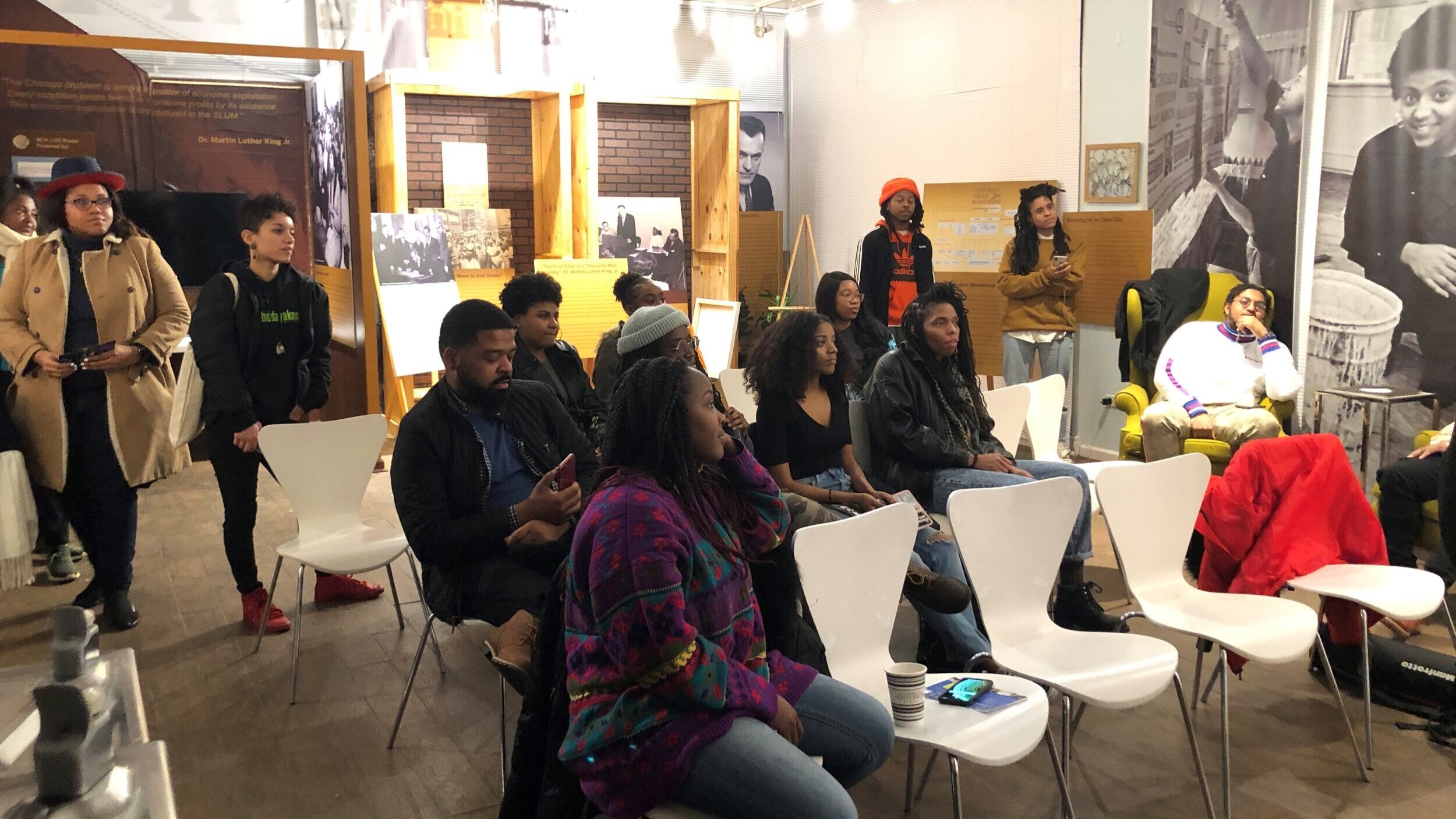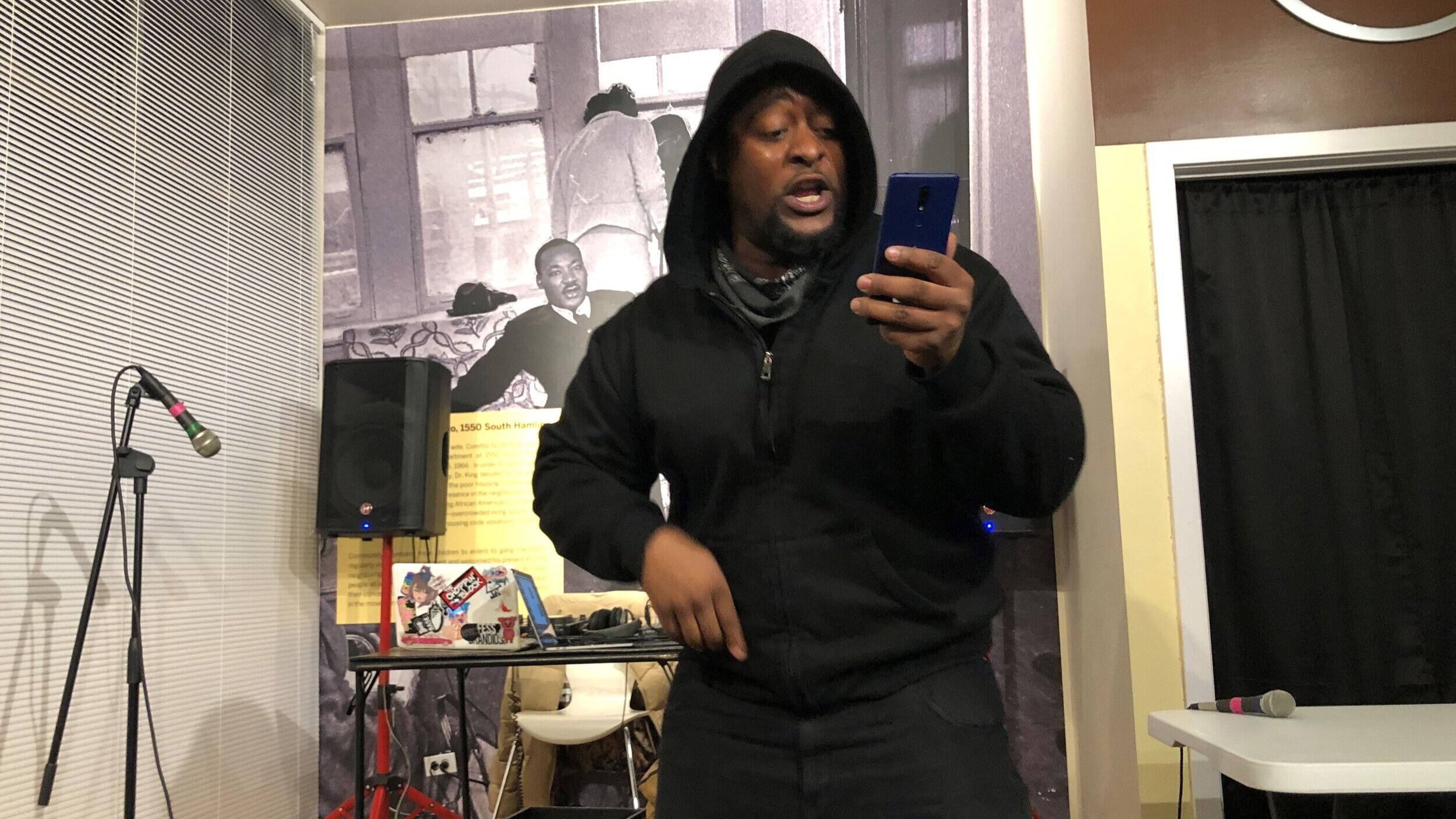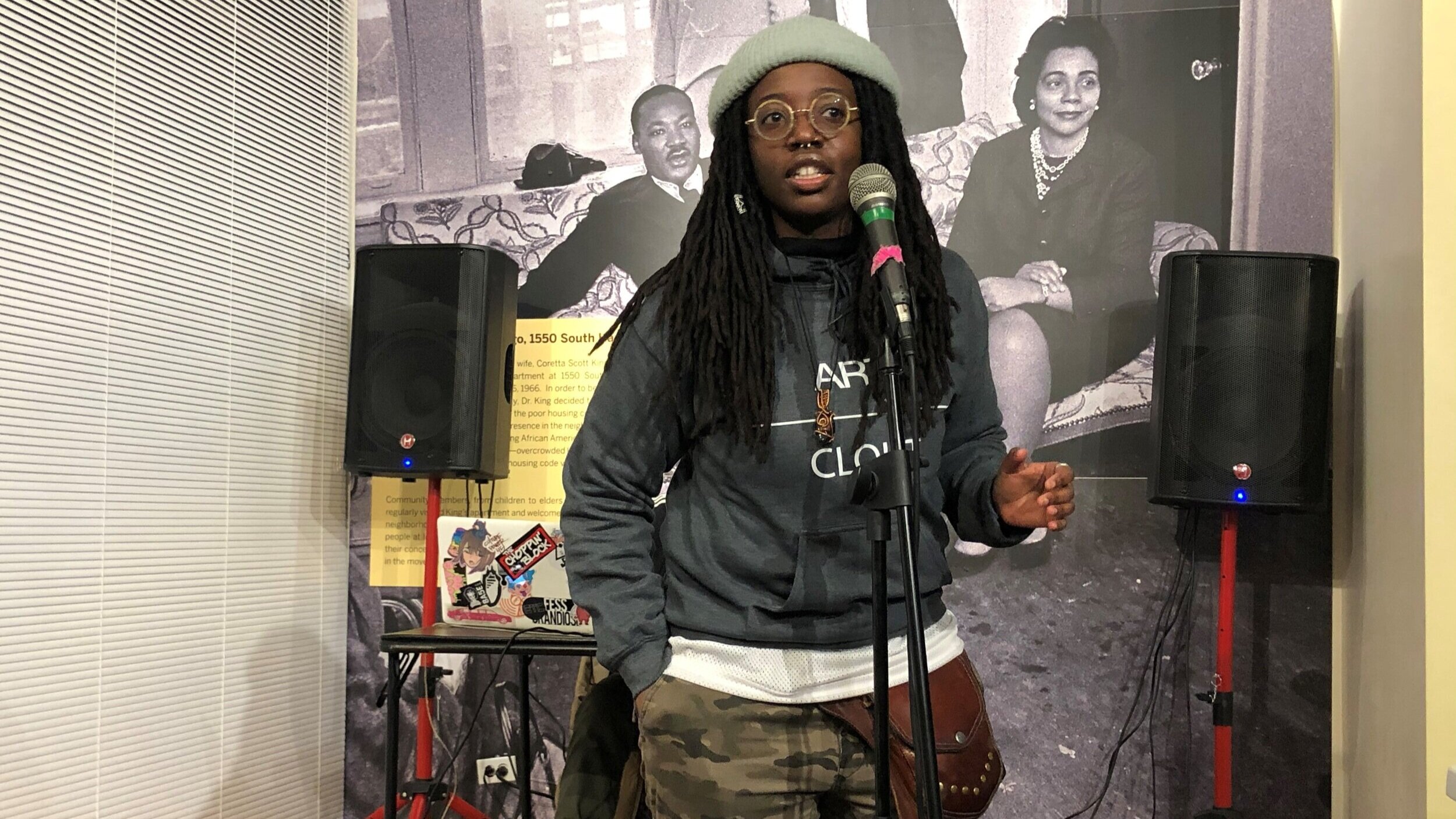Open Mic Series Focuses on Finding North Lawndale and Westside Artists To Perform





The mood was intimate and inviting at the Martin Luther King Exhibit Center as they hosted an open mic night signifying the kick-off of the Westside Wednesdays series just in time for Black History Month.
Westside Wednesdays is an open mic night series inviting creatives to perform poetry, rap, sing and network. The gatherings are slated for every fourth Wednesday of the month at various locations in an effort to bring out more west side artists. A crowd of about 20 people were listening as Alexie Young, director of the MLK Exhibit Center, stressed the importance of unity and Dr. King’s legacy.
“I think that the beauty of this space is not only does it commemorate Dr. King’s work and his legacy when we’re talking about fighting housing inequality and other civil rights…The greatest thing about this space is that it transforms and it becomes a space where people feel comfortable performing and gathering” said Young.
The series is a reboot so the MLK Exhibit Center partnered with AMFM, a creative arts brand and web magazine found by Ciera Mckissick. Mckissick is currently pursuing her residency with the School of Arts Institute Chicago (SAIC). AMFM was partially created to give west side artists and North Lawndale artists a platform to demonstrate their art.
Hosts Wdot Ill and MzTaty MzTaty encouraged artists to perform at least two pieces in between their own demonstrations. Among them was artist Saaji Mahal, who has only lived in Chicago for about a year now and had a difficult time finding things to do around her East Garfield Park home. Mahal has attended other open mic nights like Big Kids Slam at Q4 studios and Young Chicago Authors but says Westside Wednesdays was a more intimate space than other open mics around town.
“As an outsider who moves a lot, sometimes it can feel really isolating because you kind of have to know people in order to get invited somewhere,” said Mahal.
While in her Lyft on the way to the open mic, her driver asked why she was travelling to North Lawndale so late and after informing him of Westside Wednesdays he said he didn’t know there were open mic events in North Lawndale.
“I think it’s really important to have outlets like this because I think it, one, it not only signals to people who only have negative things to say about neighborhoods like North Lawndale or East Garfield Park, it lets people who are living in those neighborhoods know that there are other things to do,” said Mahal.
According to Young, it was important to SAIC to look outside of their typical site in Homan Square for the series because other art events are in different neighborhoods, like Bronzeville or Wicker Park. Young says this forces artists to travel outside of their communities to get the ‘cultural amenities’ necessary.
“It takes a lot of courage to be an artist, to be any kind of artist. You know? ‘Cause I feel like we live in a society where they tell you, be a doctor, be a lawyer, and they don’t often give us other options for creative people. I feel like we need to inspire our creative entrepreneurs. They need to know that their ideas are worth supporting, their concepts are worth exploring, so to have a space available to see that happen really just impacts the community in a powerful way,” said Young.
Outside of this series, the center is open from 5 p.m. -10 p.m for Workspace Wednesdays, another initiative to provide artists a space to complete projects and meet others in their field. Open to the public, the workshops’ target market is creatives and entrepreneurs in the community.
“It’s important to have events like this for new generations of people who are Chicagoans who may not know the history of Dr. King’s work as he lived in an apartment on Hamlin, as he was demonstrating his commitment to really feeling what it felt like to live in what was considered a slum. And that would fuel his passion to know what the people were going through but then also fight for their rights,” said Young.
As part of his work during the Civil Rights Movement in the 60’s, Dr. Martin Luther King, Jr. and his family moved into an apartment at 1550 South Hamlin Ave. in North Lawndale to launch his “action phase.” This part of his plan focused on addressing the inhumane housing conditions in Chicago, housing segregation and housing inequality. Following King’s assasination in April 1968, riots ensued which led to the demolition of the original building he resided in. Today, the Legacy Apartments and the Exhibit Center stand in the historic lot to honor his legacy and work.
For more information on upcoming open mics and other events inside the MLK Exhibit Center or future AMFM events, visit their sites or Facebook pages.

